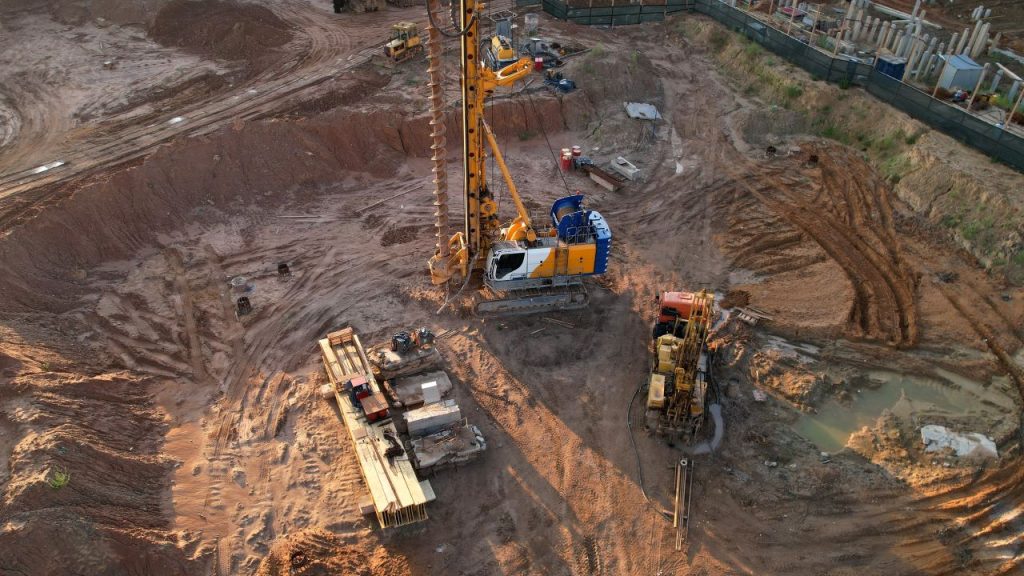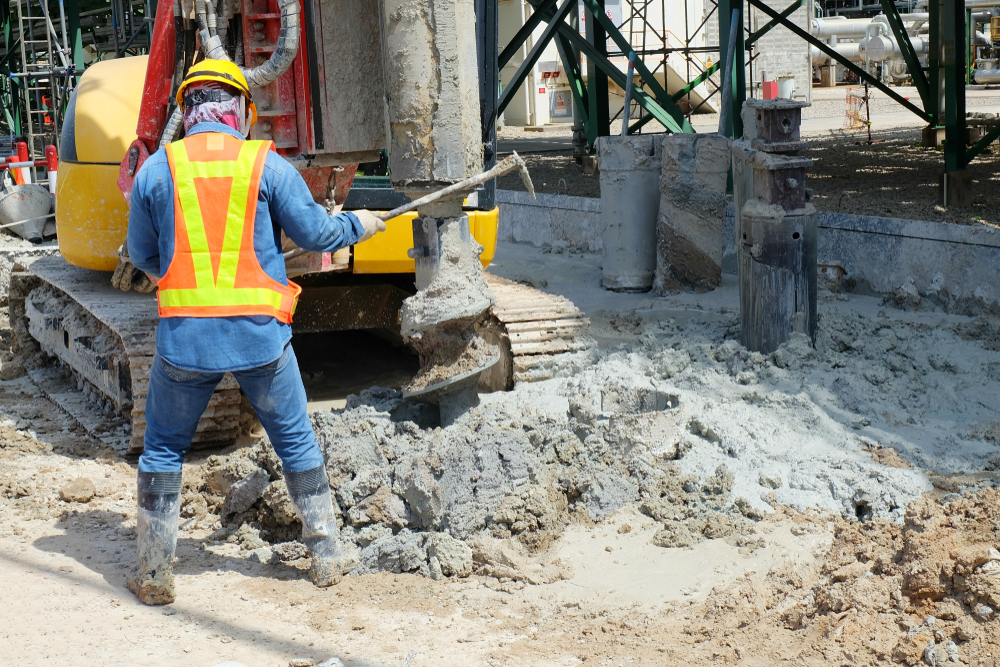How Geo Tech Engineering Sustains Large-Scale Construction Projects
How Geo Tech Engineering Sustains Large-Scale Construction Projects
Blog Article
The Necessary Contributions of Geotechnical Engineers in Evaluating Dirt Habits and Foundation Style for Lasting Infrastructure Development
Geotechnical designers offer as a keystone in the realm of lasting facilities growth, where their expertise in analyzing dirt habits straight affects the safety and security and longevity of frameworks. By employing sophisticated methods such as Common Infiltration Examinations and Cone Infiltration Testing, they thoroughly review dirt residential or commercial properties, leading to educated decisions on foundation layout.
Role of Geotechnical Engineers

Along with website examinations, geotechnical engineers review potential dangers such as dirt liquefaction, slope stability, and groundwater issues. They use advanced design principles to create solutions that alleviate these risks, making sure that designs adhere to appropriate codes and criteria. Their job commonly involves cooperation with other design techniques, engineers, and environmental researchers to create integrated approaches to infrastructure advancement.
In addition, geotechnical designers contribute to sustainable practices by advertising making use of products and approaches that lessen ecological influence. Through their comprehensive understanding of dirt technicians and geology, they play a crucial duty in fostering safe, durable, and sustainable facilities that satisfies the requirements of culture while protecting the setting.
Soil Actions Evaluation Techniques
Recognizing soil behavior is essential to educated decision-making in geotechnical design, as it directly affects the design and building procedures. Different analysis techniques are utilized to examine dirt properties, ensuring precise forecasts of its efficiency under different loading conditions.
One main approach is the Common Infiltration Test (SPT), which provides understandings right into dirt density and uniformity through the resistance come across throughout infiltration. Likewise, Cone Infiltration Screening (CPT) supplies a continual account of dirt stratification and in-situ stamina specifications, allowing a much more comprehensive understanding of subsurface conditions.
Lab tests, such as Atterberg limits, unconfined compressive strength, and triaxial tests, are necessary for characterizing dirt actions under regulated problems. These examinations facilitate the determination of crucial parameters, consisting of shear compressibility, permeability, and strength.

Foundation Style Concepts
Foundation style concepts are essential for ensuring the security and long life of frameworks, as they determine exactly how lots are sent from the superstructure to the underlying soil. These principles encompass different considerations, including load-bearing capacity, settlement, and lateral stability. A complete understanding of dirt mechanics is necessary for geotechnical designers to assess the interaction between the soil and the structure.
One secret concept is the proper choice of structure kind, which may consist of superficial structures, such as spread grounds, or deep structures, like piles or caissons, depending upon soil conditions and structural lots - geotech engineer. The structure has to be developed to decrease differential negotiation, which can bring about structural damage

Lasting Framework Practices
Exactly how can we properly incorporate sustainability right into facilities methods? To attain this, it is vital to adopt an alternative technique that highlights the connection in between geotechnical engineering and ecological stewardship. Sustainable facilities practices begin with thorough website analyses, which assess soil habits, regional ecological communities, and source accessibility. By understanding these factors, engineers can create layouts that reduce environmental effect while maximizing material use.
Moreover, employing innovative construction techniques, such as utilizing recycled his response materials and low-impact foundations, substantially decreases the carbon impact of facilities jobs. Geotechnical engineers play a crucial duty in selecting ideal products that improve longevity and sustainability, such as utilizing geo-synthetics to enhance dirt stability and decrease erosion.
In enhancement, lasting facilities techniques call for recurring tracking and upkeep to ensure that frameworks continue to be resilient over time. Eventually, these methods not only add to the long life of frameworks but likewise advertise a healthier atmosphere, lining up facilities growth with wider sustainability objectives.
Study and Applications
Study in geotechnical engineering give beneficial insights into the functional applications of dirt behavior and lasting framework techniques. One significant example is the construction of the Burj Khalifa in Dubai, where comprehensive dirt screening and analysis were carried out to evaluate the one-of-a-kind obstacles postured by the region's loose sand and high water table. Geotechnical engineers employed progressed methods such as dynamic penetrating and cone penetration testing to figure out the soil's load-bearing capacity, eventually bring about the design of a deep structure system that sustains this famous structure.
One more vital case is the removal of the San Francisco-Oakland Bay Bridge after the 1989 Loma Prieta quake. Geotechnical assessments revealed the requirement for soil stabilization strategies, including grouting and dirt nailing, to boost the seismic strength of the foundation. These treatments not just improved the bridge's safety and security yet likewise added to its long life and sustainability.
Such study exhibit exactly how geotechnical designers play an important role in recognizing soil actions and applying cutting-edge remedies to make certain the architectural integrity and sustainability of framework projects. geotech engineer. Their competence is essential in resolving the complicated tests positioned by numerous dirt Continue conditions throughout varied geographic places
Verdict
To conclude, the contributions of geotechnical engineers are important for the analysis of dirt actions and the design of foundations, which are important for lasting framework advancement. With the application of sophisticated testing strategies and ingenious materials, these specialists make sure the security and safety of frameworks while decreasing ecological impacts. The integration of sustainable practices promotes strength in infrastructure projects, highlighting the importance of collaboration among stakeholders to attain efficient construction remedies that satisfy both social and ecological requirements.
Geotechnical designers serve as a foundation in the world of sustainable infrastructure growth, where their experience in examining dirt habits directly influences the safety and security and longevity of structures.Geotechnical designers play an important duty in the style and construction of infrastructure by examining dirt and rock habits to make certain stability and security. An extensive understanding of dirt technicians a knockout post is important for geotechnical designers to assess the communication in between the foundation and the soil.
Geotechnical analyses disclosed the need for dirt stablizing techniques, consisting of grouting and dirt nailing, to enhance the seismic strength of the structure.In final thought, the contributions of geotechnical designers are essential for the evaluation of dirt habits and the layout of foundations, which are vital for lasting infrastructure development.
Report this page